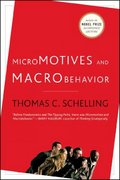Question
Chapter Review AgropurThe Canadian Dairy Cooperative Many people may not know the name Agropur but most people will be familiar with the products the Cooperative
Chapter Review
AgropurThe Canadian Dairy Cooperative
Many people may not know the name Agropur but most people will be familiar with the products the Cooperative produces. Agropur, the largest dairy -processing cooperative in North America, producing milk products, cheese and yogurt. Some of the more popular brand names include Natrel for their milk products, OKA for their cheese products, and IOGO for their yogurt products.
The organization began in 1938 when an agronomist and a farmer from Granby, Quebec convinced eighty-seven other local farmers in the area to invest $50 each to form the original organization. This was a major investment for these local farmers because at the time the world had been in a recession for a decade. The group quickly moved from supplying the farmers with feed for their animals and seed and fertilizer for their crops into making butter and cheese. Over the years the organization has made more than 140 mergers and acquisitions on the way to having operations in Ontario, western Canada, the United States and the Atlantic provinces.
One of the factors that have helped organizations like Agropur is the supply management system that Canada put in place in the 1960s. This program controls that amount of dairy, poultry and eggs that farmers can produce to what Canadians are expected to consume. The program allows farmers to produce a constant level of output on their farms and to receive a predictable income from this output. The program achieves this by setting quotas for the amount that farmers can produce, guaranteeing the farmers a minimum price for their products and imposing tariffs on dairy products coming in from other countries. Not surprisingly this supply management system has come under fire from other countries who want access to the Canadian market.
Access to the Canadian dairy market has been part of the negotiations in the free trade agreements that have been recently brokered with other countries. In the Trans-Pacific Partnership Agreement, the Canadian government is allowing access to over 3% of the dairy market and access to additional 9% of the market was agreed to with the Canada-European Comprehensive Economic and Trade Agreement. The new Unites States, Mexico and Canada trade will open up the Canadian dairy market even more by allowing American dairy producers to import more product into the country.
Organizations like Agropur understood the impact these trade agreements would have on the Canadian dairy market and they needed to prepare for the changes. Agropur was used to adjusting its marketing strategy to account for changes affecting the Canadian dairy market. In the 1940s, when the Canadian economy had recovered from the depression Agropur started processing the milk produced by its members. By the 1970s the company started looking for other ways to grow. Milk is a high-volume product but it also has a low profit margin and at the time sales of dairy products in general was not growing. The 1970s was when the company entered into a licensing agreement to produce Yoplait yogurt in Canada and started producing cheese. In the decades that followed the organization launched new products including milk based soft drinks, drinkable yogurt, and long-lasting cream in an attempt to increase customer demand. Not all attempts to increase growth were successful. The company purchased a soft drink company and a meat business - both of which they later sold. When the licensing agreement for Yoplait yogurt was not renewed the company spent millions developed IOGO yogurt line.
In 2006 the cooperative shifted their marketing efforts again. This time they identified five pillars they wanted to focus on - innovation, cost leadership, human capital, national and international development, and branding. The focus on branding has continued since then with a rebranding of the IOGO Yogurt, Natrel milk products and the OKA cheese products.
Agropur has tried different strategies to deal with the complicated Canadian dairy market and threats from increased imports.



Step by Step Solution
There are 3 Steps involved in it
Step: 1

Get Instant Access to Expert-Tailored Solutions
See step-by-step solutions with expert insights and AI powered tools for academic success
Step: 2

Step: 3

Ace Your Homework with AI
Get the answers you need in no time with our AI-driven, step-by-step assistance
Get Started


